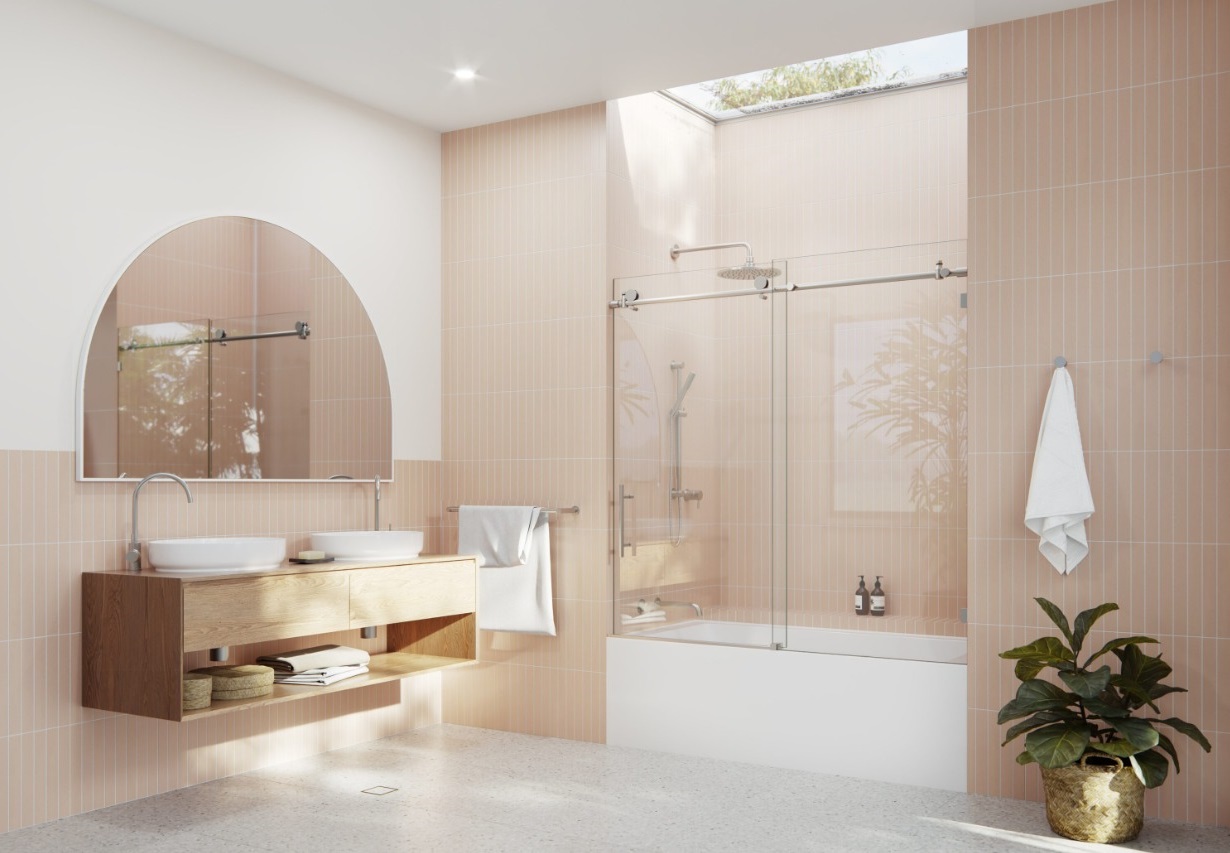Looking for glass tile backsplash ideas on the internet might help you to get inspiration. But mostly, the backsplash area in the kitchen and bathroom is commonly the continuation of the countertop material. Ceramic tiles are the most common material used for the backsplash. Choosing glass will increase the luxury and classic feel inside the bathroom.
Another interesting thing about glass tiles as the backsplash is its ability to reflect and brighten up the whole room. Besides, you can clean up the surface very easily with anything you got in your hand. So, if you want to increase the natural sense in the bathroom, using the glass tiles for the backsplash area would be a good move.
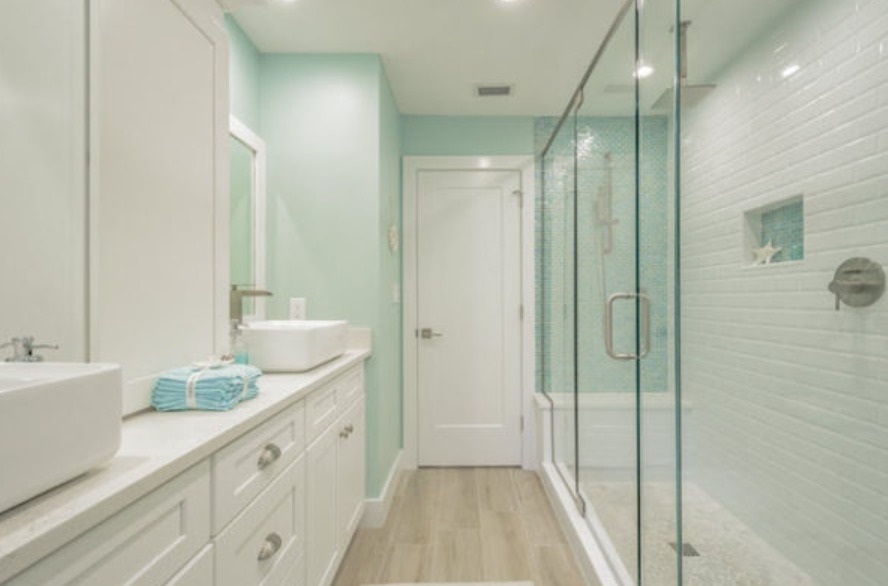
Mounted tiles
If you are a DIY expert or somebody like that, you may agree that the mounted tiles are the easiest material. The mounted glass tiles are available in sheets from ¾ by ¾ inch and 4 by 4 inches for the largest sheet. This tile could be cut by using shears so it will fit the existing space. Also, the tiles are the self-spacing type if you attach it to the mesh, which will need no grout lines at all.
Glass tiles for accent
If you are more into the individual glass tiles, turning this into an accent in the bathroom would be a good idea. You need to intersperse the tile with other materials like stone tiles or traditional ceramic. It is very possible to create an accent that looks like a jewel in the backsplash area. Also, this is a smart way to infuse expensive glass tiles made by a designer but you do not need to wreck your saving.
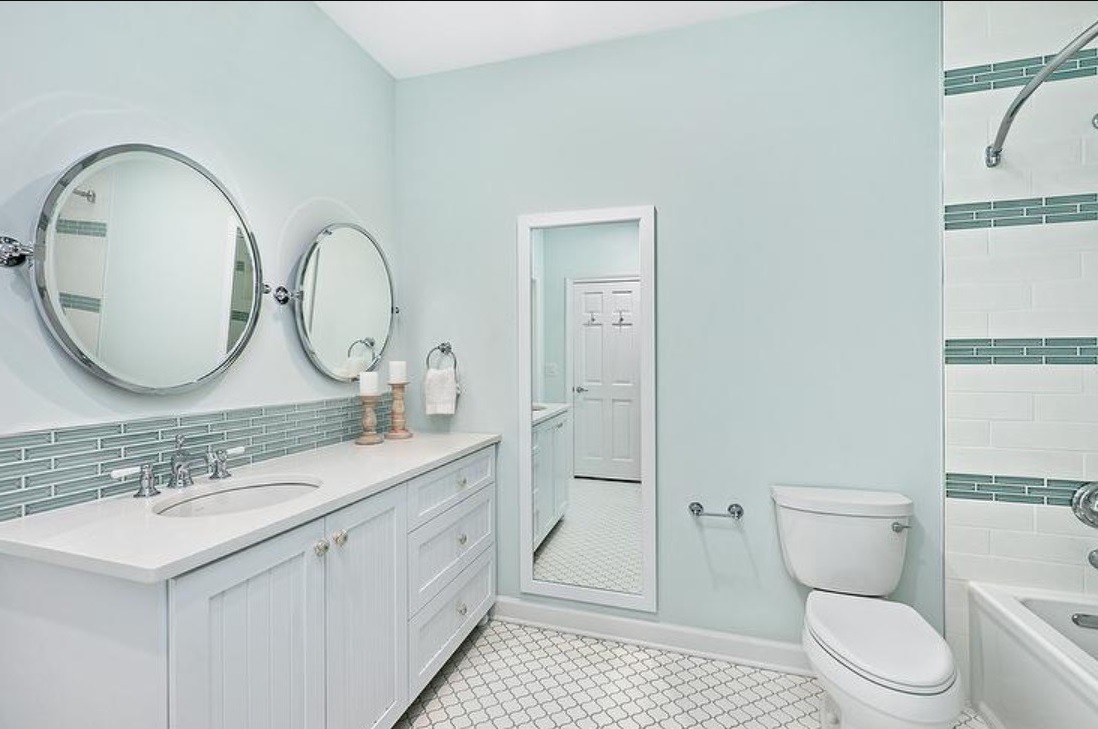
Glass tiles for the border
Another nice way to use glass tiles is by creating a border or band in the backsplash area. There are various options of design you can apply by using this style. Other than the good and versatile look, this wall treatment will give the impression of a bigger room.
Contrasting grout
So, a backsplash is the area where stains are susceptible. Using glass tiles for the backsplash is smart because it will be very easy to clean the surface. However, the story is different when it comes to the grout lines. You need to apply a darker grout instead of the traditional white grout in the bathroom. If you use glass subway tiles, you can pair it with dark grout that could create the contrast look. And this is anything you need to know about glass tile backsplash ideas.
Glass Tile Backsplash: Advantages and Disadvantages
Are you considering adding a new backsplash to your kitchen or bathroom? New tiles could be the perfect way to add a fresh burst of color and character to the space. But when it comes to selecting your new tiles, should you go for glass or ceramic? Both options offer a range of styles, colors, and price points to cater to your needs.
Many of the popular glass tiles are crafted from thin glass pieces with a translucent glaze fired onto the back of each tile. Depending on the process and material, glass tiles can be clear, colored, and even textured to create a distinctive appearance. Glass tiles are commonly available for purchase as individual pieces or in mosaic arrangements with a mesh support. Here’s what you should know about the advantages and disadvantages of glass tile backsplashes.
Pros of Glass Tile
Unmatched beauty: The transparency and endless color variations of glass make it arguably the most exquisite and modern-looking choice for a backsplash material. The tiles reflect light, making your kitchen or bathroom look brighter and more spacious. Easy to clean: Dirt and splatters can be effortlessly wiped off glass tiles with soapy water or an all-purpose cleaner. Additionally, mold and mildew don’t readily grow on glass. Completely water-resistant: Glass is impermeable, with a 0% absorption rate (in comparison, ceramic has an absorption rate of 0.5% to 3%).
A number of glass tiles are produced using recycled materials, making them environmentally conscious. Even if they aren’t, 100% glass tiles are recyclable at the end of their life. Glass tiles also require about half the energy needed to produce ceramic tiles.
Cons of Glass Tile
More expensive: Glass tiles are currently trending, but they are the most costly backsplash material available today. The estimated cost of glass tiles is $8-$30 per square foot, excluding labor.
It is crucial to have professional installation because the adhesive is visible through the tiles due to the translucency of glass. It’s difficult to achieve a professional-looking result if you attempt to install glass tiles yourself. Scratches can occur: One of the major drawbacks of glass tiles is their susceptibility to scratches. Sanded grout will scratch glass tiles, so unsanded grout is necessary. Glass can be scratched by abrasive cleaners and scrubbers, so it’s best to use non-abrasive cleaners and nylon scrubbers.
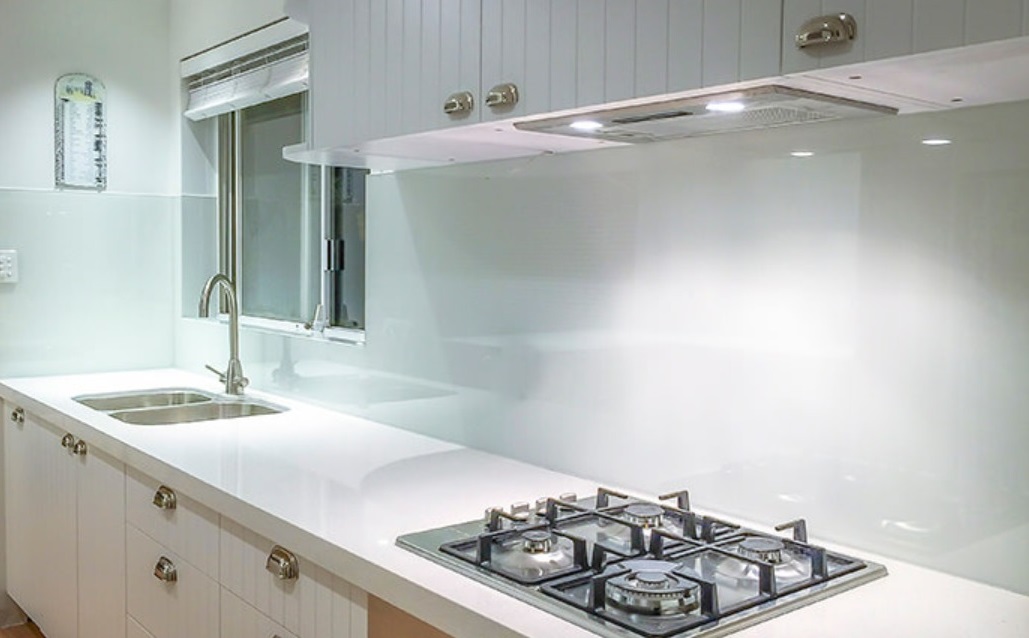
Types of Glass Tiles
Most glass tiles have a glossy or matte finish and come in various sizes, shapes, and colors. From subway tiles to mosaics, vibrant patterns to subtle hues, each type of glass tile provides a unique and beautiful option. Cast glass tiles have a textured finish with bubbles, creases, and distinctive designs that result from a high-heat firing process. Because the high temperature creates a liquid state, cast glass tiles have color throughout, similar to marble.
Fused glass is produced using sheet glass that undergoes a multi-step firing process involving adding layers of glaze and color. This unique process can create tiles with smooth or textured finishes and uniform or uneven color patterns. Laminated glass tiles are made with sheet glass that is fired at a lower temperature. These tiles have a layer of color applied to the back of the clear glass, enabling the color coated on the back to transfer through the clear glass.
Once you have considered the pros and cons of a glass tile backsplash, glass tiles can be a fantastic way to update your kitchen, bathroom, or any other area of your home.
Best Uses for Glass Tile
Glass tile is a versatile and beautiful material that’s perfect for kitchen and bathroom backsplashes, as well as many other applications. Because glass tile is waterproof and durable, it’s ideal for bathroom tubs and showers. The discussion about the pros and cons of glass tile in showers continues, but advancements like non-slip glass tile for floors are making a difference.
While large glass tiles aren’t suitable as a primary floor covering, mosaic glass tiles can transform a bathroom floor or entryway. Glass tiles are suitable for almost any vertical application, from a unique fireplace accent to a distinctive shower wall.
Tip: To create the illusion of more space in a small bathroom or kitchen, consider installing light-colored or translucent glass tiles. Seek advice from a professional installation company for assistance.
Cleaning and Maintaining Glass Tiles
One of the advantages of glass tiles is that they are simple to clean. Typically, glass cleaner or soap and water are sufficient for maintaining the appearance of glass tiles. When cleaning, it’s important to avoid abrasive cleaners or scrubbers to prevent scratching. After cleaning the glass tiles, rinse them with warm water and buff them to achieve a shine.
While glass tiles are durable, it’s essential to handle grout with care as it is not as resilient. It’s best to refrain from using bleach to clean grout, unless there’s a risk of discoloration. Instead, opt for a milder over-the-counter grout cleaner. Regularly check the grout for any signs of damage, such as missing grout, and regrout as necessary to manage moisture.
Are glass tiles safe?
In the past, glass tiles were primarily used to enhance ceramic tiled surfaces. However, nowadays, they are utilized in various other applications, including flooring. Glass tiles are commonly found on kitchen backsplashes, countertops, bathroom and kitchen walls, pool decks, and home entryways. They offer a distinctive and colorful style with a variety of patterns.
For families with children or homes with high foot traffic, the concern of broken glass tiles arises. No one wants to worry about the possibility of the floor or walls breaking while taking a shower, right? So, are glass tiles susceptible to breakage? Today, glass tiles are manufactured in a way that makes them highly resistant to breakage. This is one of the advantages of using glass tiles in areas with high traffic, such as bathrooms and kitchens: they are exceptionally durable.
What causes glass tiles to crack?
There’s nothing more frustrating than finding cracked glass tiles in the bathroom. What leads to this occurrence?
Improper Installation: The layout, dimensions, and other factors must be carefully considered during the installation of glass tiles on walls.
Low Quality: It is crucial to use high-quality glass tiles for bathrooms. Poor-quality ones are more prone to cracking compared to their high-quality counterparts.
Excessive Pressure/Sharp Impact: Glass tiles can crack due to heavy pressure or when they are struck with a sharp object.
Incorrect Adhesive: Improper adhesive used for glass tiles can result in inadequate adhesion, leading to cracking.
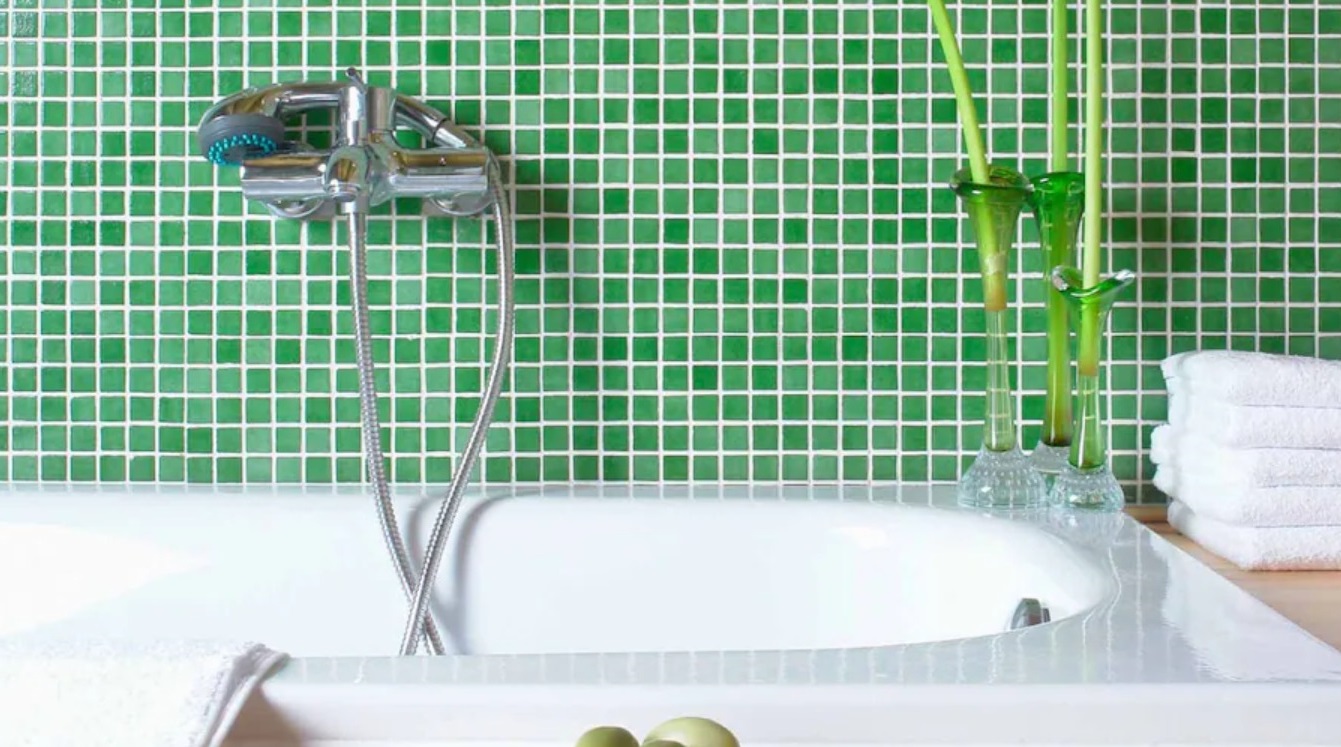
Are glass tiles slippery when used on shower floors?
Indeed, glass tile shower floors can become slippery when wet, as per basic science. Due to this aspect, many homeowners are hesitant to use glass tiles for their showers, especially if they have young children. However, when the glass tile pieces are small, the rough joints provide traction, making them safer for shower floors. Opting for mosaic glass tiles for your shower floor allows for the floor to be sloped. Additionally, after the installation is completed, a non-slip sealant can be applied.
Do you need to seal glass tiles?
Glass tiles are non-porous, making them easy to care for and low-maintenance, which is ideal for bathrooms. They do not absorb water and are resistant to staining. However, the grout used in the installation of glass tiles is susceptible to water absorption. Therefore, an impregnating sealant should be applied to protect the grout lines. When exposed to water, the grout will become loose, potentially resulting in cracked or dislodged glass tiles.
Is it safe to use bleach on glass tiles?
As previously mentioned, glass tiles are easy to clean and can be maintained with a basic window cleaner. It is best to avoid using strong chemicals or abrasive scrubbers on glass tiles. If the grout is white, bleach can be used safely, but for colored grout, it’s advisable to refrain from using bleach to preserve the color.
Is glass tile more expensive to install?
When comparing the installation of glass tile to ceramic tile, the professional installation cost is higher by up to twice. Although it is possible to install glass tiles by yourself, it is important to note that the adhesive might be visible through the translucent glass tiles. If not done correctly, the adhesive could seep through the tiles.
When making a decision: Is glass or ceramic tile better?
Both materials have their advantages and disadvantages. If you are on a tight budget, ceramic would be the preferable choice. If budget is not a concern, glass tiles are available in beautiful colors that can give your bathroom or kitchen a timeless and stunning appearance. On the other hand, ceramic is a more durable material for busy households and still provides an attractive finish with a natural, earthy look.
Can backsplash tiles be used on floors?
With the wide array of tile mosaics available in stores, which are commonly used to create unique backsplashes and accent walls, you might be wondering if they can also be utilized as floor tiles. After all, intricately patterned tile floors with small, delicate tiles are nothing new. However, contemporary designers are giving a new twist to ceramic flooring, and yes, most tile mosaics are suitable for this purpose.
Generally, any tile made from natural stone or porcelain can be used on floors. Certain ceramic and glass tiles may exhibit potential cracking issues if used on horizontal surfaces, but they are often stronger and more resilient than anticipated! It’s recommended to verify with the manufacturer. Fortunately, there are numerous convenient ways to ascertain which tiles are suitable for flooring – often indicated on the website, in the tile description, and specifications.
There are numerous compelling reasons to install tiles on your floors, even tiles that are typically used for backsplashes.
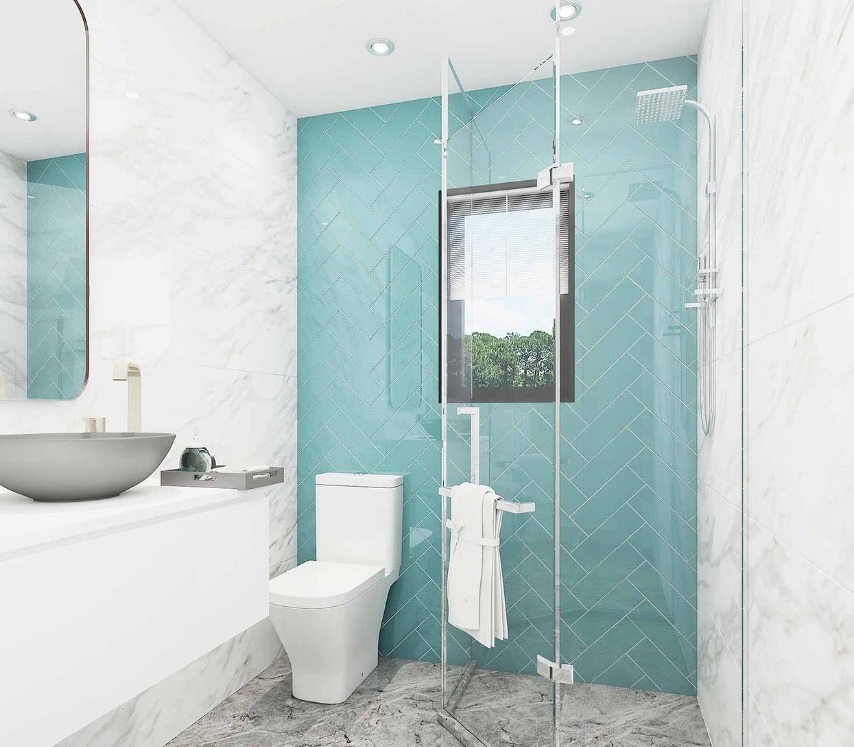
Should I select glass tile or ceramic tile?
If you are planning to install a new backsplash in your bathroom or kitchen, you should consider where your new tiles will be placed in order to enhance a part of your home with a touch of color and personality. But do you know which type is most suitable for your space? Here is a brief overview of what you need to take into account.
Ceramic Tile vs. Glass Tile
What’s the Distinction?
Glass tiles are created from thin pieces of glass with a shiny, reflective glaze fired onto the back of each tile. They are available in beautiful patterns, either pre-designed or individually. Conversely, ceramic tiles are manufactured by firing a specific clay at high temperatures. Besides the materials and production methods, they possess distinct characteristics and applications.
Benefits
With environment-friendly features, non-absorbent properties, ease of cleaning, and unparalleled beauty, Delray Beach glass tiles are the ideal choice for your kitchen and bathroom backsplash. Some glass tiles are crafted from recycled materials, and even if they are not, they are still entirely recyclable after use. As you know, glass is waterproof, so you can trust glass tiles when installing them on your bathroom backsplash. On the other hand, ceramic tiles are easy to install and more cost-effective than glass tiles. With a bit of practice, patience, and a good guide, you can definitely install ceramic tiles.
Is the trend of using glass backsplashes still relevant?
Backsplashes serve a dual purpose of both aesthetics and practicality. Despite coming across several options for covering kitchen walls and shielding them from splashes, none of the designs seem to be visually appealing. The aim is to find something stylish and contemporary without looking overly modern and quickly becoming outdated.
While it’s challenging to anticipate trends, where does a glass backsplash stand in terms of popularity? Is it currently fashionable or will it soon become passé?
Glass backsplashes are still considered to be in vogue.
Glass is an incredibly versatile material that has the ability to withstand changing trends. Its adaptability to mimic a wide range of materials has contributed to its prolonged popularity. A glass backsplash is an excellent option for kitchens or bathrooms for various reasons, so let’s delve into the details.
Firstly, glass backsplashes can be made transparent if desired. Although backsplashes are inherently decorative, it can be a shame to conceal the underlying wall, especially if it features a vibrant new paint job or unique wallpaper. By opting for a clear sheet of glass, you’ll be able to protect your walls from stains and splatters while still being able to admire the beauty of your walls every day.
Another factor to consider when contemplating a glass backsplash is the extensive range of designs available. You have the flexibility to select a backsplash that is large or small, rectangular or round, colored or plain, and illuminated or not. The customization options are virtually endless.
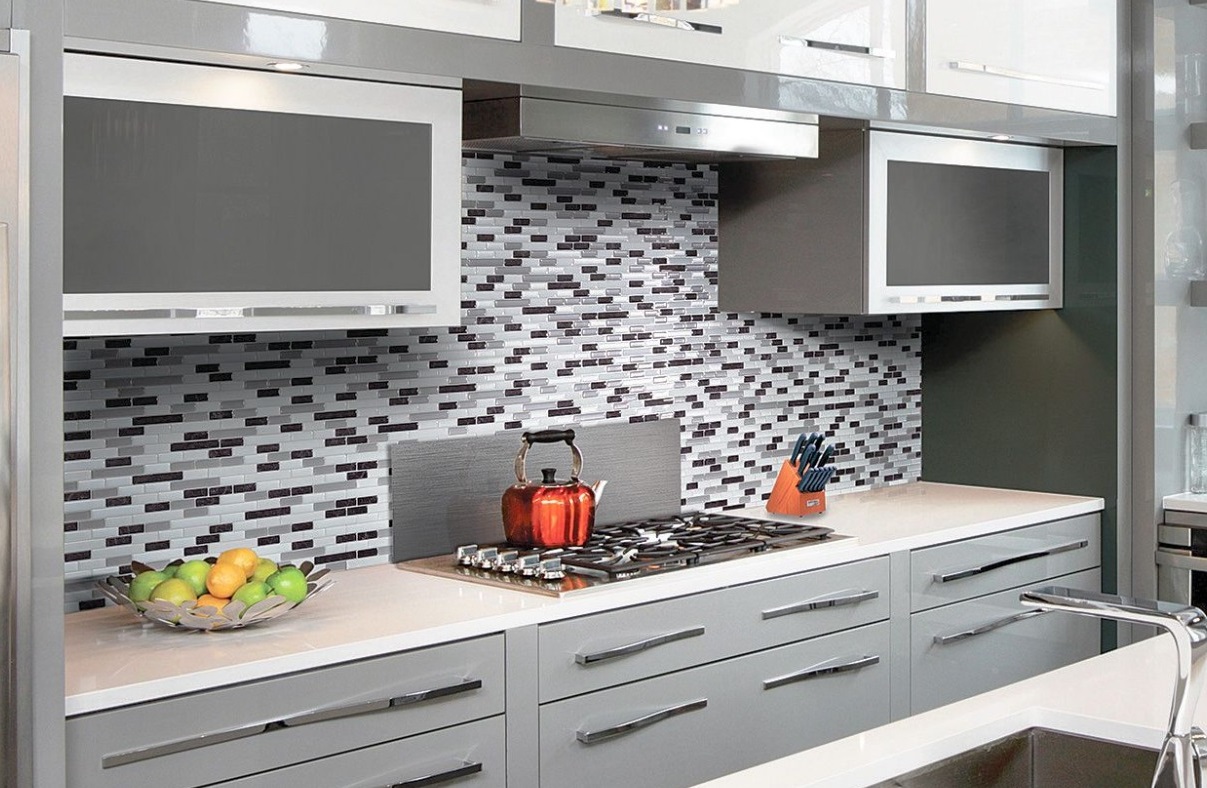
Additionally, another compelling reason to opt for a glass backsplash is the multitude of textures available. Your backsplash can feature a subtle concave texture or an intricate design resembling flowing water or a starry galaxy.
As you weigh your choices, bear in mind that glass backsplashes are available in a variety of sizes. Depending on your requirements, you can opt to protect a section of your wall or the entire wall.
Furthermore, an outstanding feature of glass backsplashes is the possibility of incorporating LED lighting behind or around the glass panels. The available lighting colors include blue, white, red, and green. LED lighting can truly enhance the appearance of your backsplash, particularly if you opt for textured glass. This lighting not only allows you to appreciate the smallest details but also provides added safety, especially if you tend to navigate the kitchen for snacks late at night.
Final Considerations on Glass Tiles
Despite being well-versed in the advantages and disadvantages of glass tile backsplashes, many homeowners opt for glass over traditional ceramic tiles. In instances where glass tiles exceed the budget, combining glass and ceramic can be considered. This entails installing ceramic tiles for the majority of the backsplash and incorporating a strip of glass tile as an accent. This approach serves as an ideal compromise, balancing the higher cost of glass tile with its benefits.
